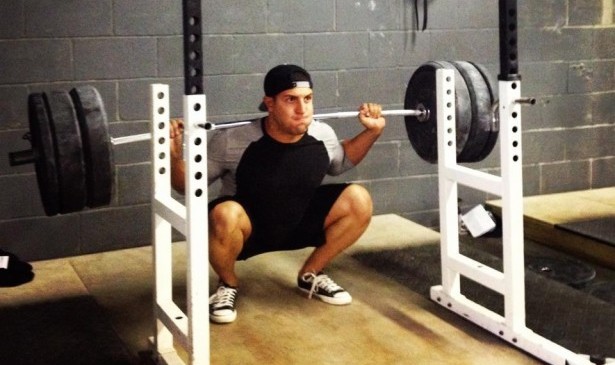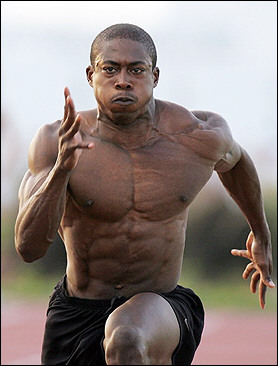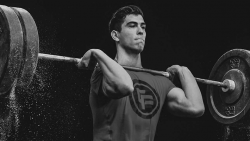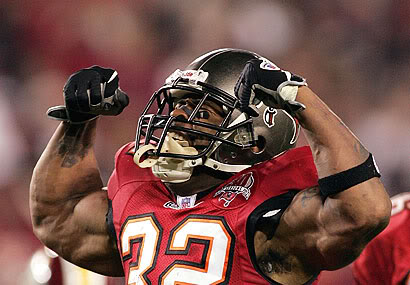Anyone can learn how to run faster. However, breaking through the current average speed limit takes training, discipline, as well as determination. For the record, your speed performance depends on a variety of factors, but it has much to do with your current fitness level.
What makes a great sprinter is his or her combination of muscularity and explosive power. Contrary to popular belief, you can be big, lean, strong, and fast at the same time. There’s no need to pick between your strength and speed.
You can reap the greatest benefits in speed and build up endurance if you actually optimize your speed-strength training with the right techniques. Unfortunately, this is something not many coaches and athletes seem to embrace at the moment.
Maximal strength strongly correlates with body weight, lower body strength training movements and ultimately the sprinting times. The stronger you’re for your body mass, the faster you’re more likely to be.
That being said, let’s now have a look at some of the most effective exercises to improve your running speed while maintaining or gaining maximal strength.
Related: How to Run Your Fastest 5k Race
How to Run Faster – 8 Ways To Increase Your Running Speed
Below are 8 ways to make you a faster runner. Whether it is long-distance or sprints, all of these will help.
Make Squats Your Best Friend
You already know that strong, healthy legs are critical to your sprinting speed, as the force you apply to the ground basically influences how fast you can run. One of the best ways to increase your lower body strength is through squats. If we were to pick one strength exercise, then this is certainly it.
You need squats, squats, squats, squats, and more squats. If you’re already squatting hard, maybe now is the time to try a different approach at how often you do it. It’s best to try hammering your squats as your body and recovery abilities allow.
Loaded squats will strengthen your glutes, quads, calves, and hamstrings, and this plays an essential role in improving your ground reaction force. What’s more, it helps condition your entire core musculature. Well, this allows for a more efficient transfer of kinetic energy through your hips, torso, and shoulders when you sprint.
Don’t take my word for it though, this study by Wilsoff et al at the Norwegian University of Science and Technology found that “There was a strong correlation between maximal strength in half squats and sprint performance and jumping height”
While squatting can be done using a variety of styles and different equipment, the key to reaping big is trying out the barbell back squat. You will want to focus on this specific exercise technique, as it integrates your core muscles with quads, hamstrings, and glutes.
This is backed up by this study at the Exercise Science Department of East Stroudsburg University in Pennsylvania which looked at the acute effects of heavy back and front squats on speed during forty-meter sprint trials. They found that the “HBS (Heavy Back Squat) produced significantly greater speeds compared with the HFS (Heavy Front Squats) treatment”. The study concluded by saying that ” coaches could incorporate HBS into the warm-up procedure of athletes to improve sprinting performance”
While the back squat should be your bread and butter you should also mix in variations of squats, such as sumo squats, single let squats, jumps squats, and squat to overhead press. These will help you to build explosive power, balance, and stability.
Try Deadlifting
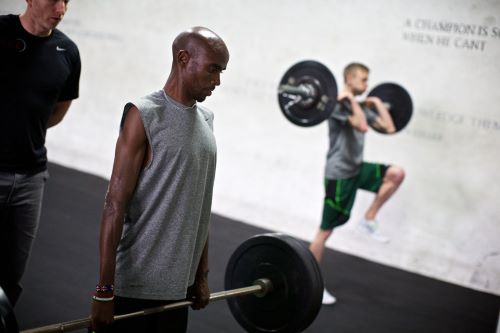
There has been some degree of debate amongst speed training professionals on whether deadlifts can really help increase sprinting speed. Just like squats, deadlifts also are so involved in improving the overall athlete performance to the highest degree possible. And there are dozens of research studies to back up the statement.
This type of strength exercise typically targets nearly 60% of your entire body. A deadlift works your entire posterior chain. It recruits and fires the muscles of the hip, hamstrings, quadriceps, upper back, and lower back. These muscles act as the “engine” of an athlete, if they are weak you will be slow.
Improving your posterior chain strength will improve your power output and speed.
When executed properly, deadlifting can improve the strength of these muscles. Other exercises that can also improve your posterior chain strength include back extensions, glute ham raises, hip thrusts and glute bridges. Mix these into your training as well.
Oh, and by the way, that person in the photo above who is deadlifting is Mo Farah. He is an Olympic gold medalist distance runner and he squats and deadlifts with over 200lbs year-round as part of his training.
Do Hill Runs
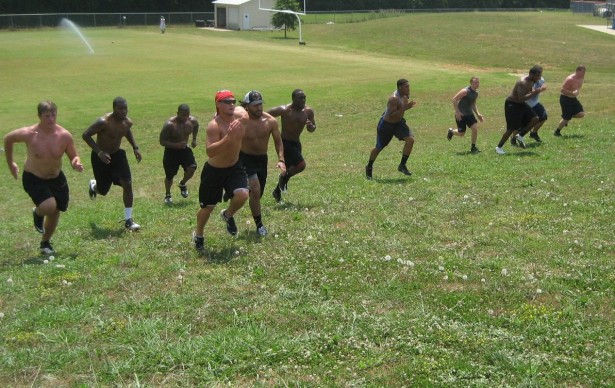
If you’re used to running on flat ground, you should consider taking a new challenge as from today. Running uphill can present a real challenge even for accomplished athletes. At first, this might feel intimidating but gradually you’ll get used to it.
The muscles recruited when running over hilly terrain are the same muscles used for powering your sprints. This will help strengthen your legs, lungs, as well as the heart. It is an excellent workout, as the strength you build running inclines can greatly improve your sprinting speed to a whole new level over time. Trust me, you’ll find that running faster on a level surface is far a lot easier.
An effective way to benefit from this form of strength exercise is certainly to do hill repeats. While no two hills are the same, generally you should try limiting your running distance between 100 and 300 meters on longer hills.
Run up as fast as you can and repeat as many times as possible depending on your abilities. Short distances will give you enough room to recover by jogging or walking down the hill before making another sprint. Running downhill is not recommended because it stimulates over speedrunning. And if the gradient is too steep, you’ll surely be subjected to an increased risk of sustaining serious injuries.
Constant progression is important to get the most of the hill running workouts. It’s best to start with a few rounds and ramp up your frequency when you come back to train another day.
Unlike regular running on flat surfaces, hill sprints will help an athlete to achieve high intensities while being easier on the joints and ligaments.
Related: 8 Reasons Why You Must Sprint for Your Physique
Move weights quickly
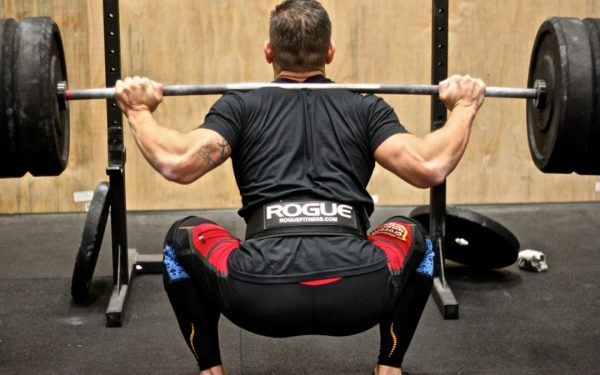
When training for maximal strength, you want to move those large weights as quickly as you possibly can to help activate the fast-twitch muscle fibers. This strengthens your muscles as well as improves your acceleration and sprint speed. However, for safety reasons, always stick to weights you can lift or pull properly and which allow you to do as many reps as possible.
Do Tempo runs

The objective of performing a tempo run is to get the body accustomed to running at a comfortably hard pace for a prolonged period simply by finding the lactate balance point (LBP). Your pace should be slightly faster compared to the target goal time. Tempo runs are an ideal type of training for distance runners, especially half marathon and full marathoners.
As you run, there reaches a point when you have to burn glycogen without oxygen and this leads to the formation of lactic acid. More lactic acid is produced during high-intensity runs. What happens is that this byproduct breaks down into lactate and hydrogen ions when in the blood.
With lactate, it will be processed and converted to fuel. The hydrogen ions, on the other hand, will be accumulating in your blood. This poses a problem to your muscles, making it hard for them to contract. That’s why you’ll feel running becoming more strenuous. Breathing becomes more rapid, muscles start to ache, and a burning sensation sets in.
The good news is that it’s possible to train your body to become more efficient at buffering the hydrogen ions to delay that burning sensation, allowing you to run faster and longer. And this is where the tempo runs come in.
When you start training at the lactate threshold pace, your body will condition itself and become better at moving lactate in areas it is needed.
Your recent race time can be a strong predictor of your lactate threshold. Based on it, take a treadmill test where you adjust the treadmill pace in increments of 3 minutes as you monitor the heart rate. Wait for your heart rate to plateau and record the number. Well, that number should be a fairly accurate reflection of the zone where the concentration of lactase begins. You can also use a high-tech handheld lactate analyzer to find your LBP.
Use Fartlek Training

Fartlek training is becoming increasingly popular among coaches and athletes in recent years. The Swedish word “Fartlek” translates to English as speed splay. It is designed to be fun and spontaneous by following varying intensity and terrain at random intervals throughout sprints.
This is a very flexible training that typically includes some quick acceleration sprints that last for about a minute and then resume running at a regular easy pace. It’s entirely up to you what the ultimate ratio of sprinting to jogging will be. But, experts often recommend incorporating Fartlek workouts into a 40 to 60-minute run to reap big.
In general, though, this training method simply provides you with the opportunity to be creative, depending on your recovery abilities and the way you’re feeling on the training day. Most people will maintain their peak speed until they get to a specific landmark structure. You’ll want to train where there’s as little structure as possible to make these workouts more effective.
Before you start a Fartlek workout, it pays off to warm up first and prepare your muscles enough for the demanding accelerations ahead. It’s ideal to keep your warm-up sessions to at least 10 to 15 minutes.
Please keep in mind that Fartlek workouts are not a series of preset distances that you couple up with some recovery periods. Otherwise, you’ll actually be doing track training.
It is also important that you give yourself reasonable cooldown periods. Failure to this, you risk having to deal with some sore muscles in the next few days. Like with any workout, progressive training is important and you want your body to be ready for the challenge the next day.
Use High-Intensity Interval training

This workout technique involves alternating short, hard bouts of high-intensity running with brief recovery periods of low-intensity running. It can greatly help you improve your performance, whether you’re training for a marathon, short race sprints or you simply want to torch some body fat. It works fast.
The best way to perform your HIIT workouts is to start by jogging slowly for about 10 minutes to warm up. After that, try running as fast as you possibly can for 2 to 5 minutes. When running a high-intensity pace, you’ll not be able to comfortably hold a conversation with someone.
You’ll need to jog for the same amount of time when you enter the recovery phase. This stop-start pattern is really essential, as it trains your body to recover a lot faster between your bursts of sprinting. Over time, HIIT increases your ability to run not only faster but also longer.
Repeat the training pattern 4 to 6 times. Also, be sure to do this at least twice a week. You can continue with your training as you want until you reach your desired running speed.
Lose some body fat
As we mentioned earlier in our post, your current fitness level matters a great deal when it comes to improving your explosive power and speed. Unfortunately, you can be fit but not at your ideal weight. This is especially true if you belong to the group of people with intense training schedules, as most of them tend to eat large meals to compensate for their workouts.
Carrying extra fat adds to your weight and this means more effort needed by your muscles to complete a run. Therefore, it would be ideal to drop some pounds of fat and get lean. And of course, you will need to keep up with your regular strength training.
We recommend that you work on revamping your diet and change your eating habits. Reward your body with a healthy, nutritionally balanced diet that will reduce your carb-loading frequency. For example, consider increasing the intake of healthy fats and protein-rich foods. Well, these foods will help increase feelings of fullness.
Alternatively, you can ask your nutritionist to recommend a healthy diet plan, which is optimal for running faster and losing fat.
The takeaway
As much as you want to improve your strength and speed, it’s important to prioritize proper form and gradual progress to avoid injuries. Also, do not push yourself to total exhaustion. Too much of this can quickly turn into a not-so-great experience, which can easily harm your motivation for constant progression.
A good technique will recruit and build strength in your muscles to increase force generation, power, speed, and overall performance. Whatever your reasons are, following the exercises we’ve discussed above can help achieve your running speed goals.
Staying relaxed is also extremely important in any race. The more relaxed you feel, the smoother and fast you’re more likely to run. When you tense up, your muscles get tight and performance decreases.
References:
https://www.ncbi.nlm.nih.gov/pmc/articles/PMC1724821/
https://www.ncbi.nlm.nih.gov/pubmed/18296970

Ryan is a former college wrestler and lifelong fitness fanatic with over 25 years in the industry. He’s run half marathons, tackled mud runs, placed in body transformation contests, and coached everything from wrestling to girls’ soccer.
Along the way, he’s tested hundreds of supplements and built a deep well of supplement knowledge. His work has appeared in Muscle & Strength, Testosterone Junkie, The Sport Review, and more. Today, he’s the editor-in-chief of this site, still training hard and helping others reach their goals. Connect with him on LinkedIn below.

